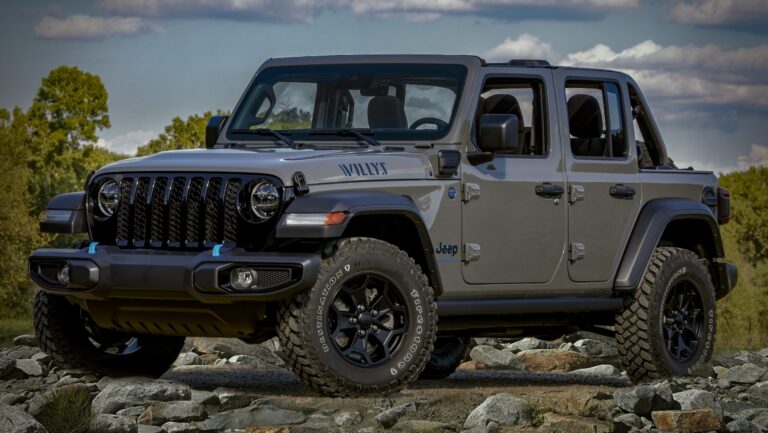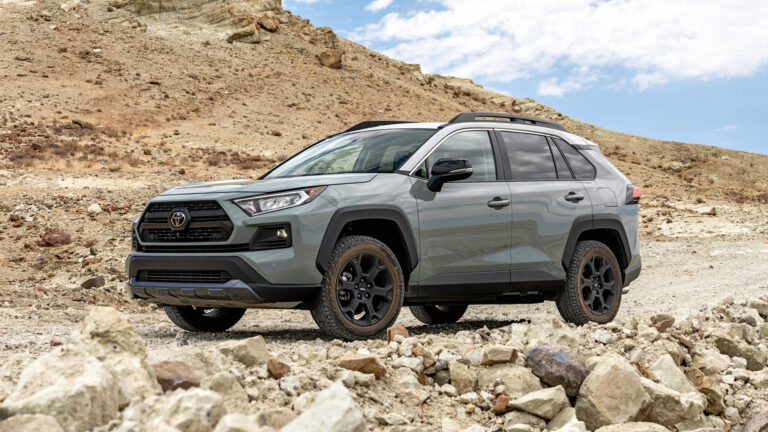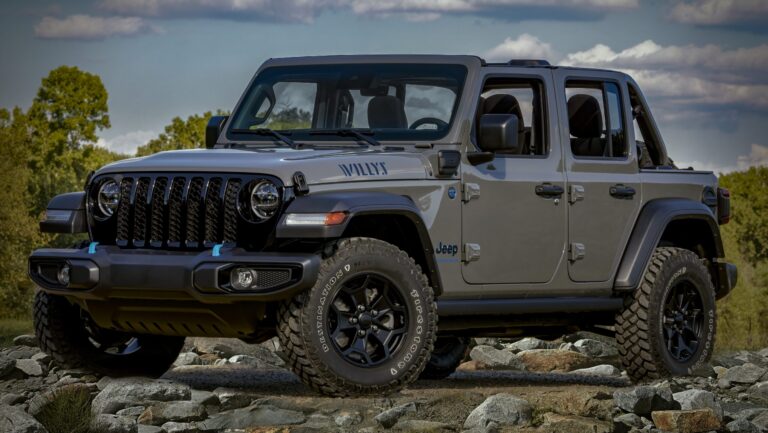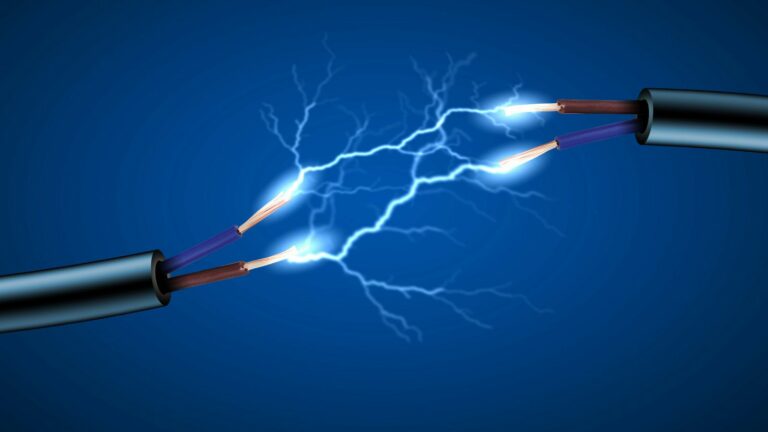1997 Jeep Wrangler Engines For Sale: A Comprehensive Buyer’s Guide
1997 Jeep Wrangler Engines For Sale: A Comprehensive Buyer’s Guide jeeps.truckstrend.com
The 1997 Jeep Wrangler, affectionately known as the TJ, holds a special place in the hearts of off-road enthusiasts and daily drivers alike. Known for its robust build, classic round headlights, and coil-spring suspension, the TJ generation marked a significant evolution for the Wrangler. However, like any vehicle approaching its third decade, the heart of the beast – its engine – may eventually require attention, whether due to wear and tear, an unforeseen failure, or the desire for a performance upgrade. This guide delves deep into the world of "1997 Jeep Wrangler Engines For Sale," providing a comprehensive resource for anyone looking to replace, upgrade, or understand the powertrain options for this iconic vehicle.
Finding the right engine can breathe new life into your beloved TJ, ensuring many more years of adventure, whether on the trail or the asphalt. It’s not merely about buying a part; it’s about making an informed investment that extends the legacy of a truly capable machine.
1997 Jeep Wrangler Engines For Sale: A Comprehensive Buyer’s Guide
Understanding the Heart of the 1997 Jeep Wrangler TJ
Before diving into the market, it’s crucial to understand the original engine options that powered the 1997 Jeep Wrangler. Two primary engines were available, each catering to different needs and preferences:
-
2.5L AMC 150 Inline 4-Cylinder Engine:
- Characteristics: This four-cylinder engine, producing around 120 horsepower and 135 lb-ft of torque, was the standard offering. It’s known for its simplicity, reliability, and decent fuel economy (for a Jeep). While not a powerhouse, it’s perfectly adequate for light off-roading and daily commuting, especially when paired with the manual transmission. Its lighter weight also contributes to better articulation in some off-road scenarios.
- Pros: Simplicity, ease of maintenance, better fuel economy, often more affordable.
- Cons: Limited power, struggles with larger tires or heavy loads, can feel underpowered on highways.

-
4.0L AMC 242 Inline 6-Cylinder Engine:

- Characteristics: The legendary 4.0L inline-six, churning out approximately 181 horsepower and 222 lb-ft of torque, was the optional and highly sought-after engine. Renowned for its bulletproof reliability, strong low-end torque, and smooth power delivery, it’s considered one of the best engines ever put into a Jeep. It makes the TJ much more capable on the highway, better suited for towing, and significantly more confident on challenging trails.
- Pros: Exceptional reliability, abundant torque, strong performance, widely supported by the aftermarket.
- Cons: Higher fuel consumption, can be more expensive to acquire.

Understanding which engine your TJ originally came with, and which you desire, is the first critical step in your search.
Why Replace Your 1997 Jeep Wrangler Engine?
Owners typically seek a replacement engine for several reasons, each driving a different approach to the purchase:
- Catastrophic Failure: A blown head gasket, cracked block, seized engine, or major internal component failure often necessitates a complete engine replacement.
- High Mileage & Wear: Over hundreds of thousands of miles, even the most robust engines show signs of wear – excessive oil consumption, loss of compression, persistent knocking, or reduced power. A replacement can refresh the vehicle’s performance.
- Performance Upgrade: Owners of the 2.5L may wish to swap to the more powerful 4.0L for improved highway manners, towing capacity, or off-road prowess. More ambitious owners might even consider an entirely different engine swap (e.g., V8, diesel) for extreme performance.
- Project Vehicle: Restoring a neglected TJ or building a custom rig often begins with a solid foundation, which includes a reliable engine.
Types of 1997 Jeep Wrangler Engines Available for Sale
The market for replacement engines offers several categories, each with its own advantages and drawbacks:
-
Used/Salvage Engines:
- Description: These are engines pulled directly from donor vehicles, often from salvage yards, private sellers, or wrecked Jeeps.
- Pros: Most affordable option; immediate availability.
- Cons: Unknown history, mileage, and internal condition; no warranty or very limited warranty; "as-is" purchase carries significant risk.
- Tips: Always try to see/hear the engine run if possible. Ask for compression test results, oil pressure readings, and maintenance history. Check for signs of leaks, excessive sludge, or external damage.
-
Remanufactured/Rebuilt Engines:
- Description: These engines have been professionally disassembled, inspected, cleaned, and reassembled with new or reconditioned parts (e.g., pistons, rings, bearings, gaskets, seals). They are brought back to or exceed OEM specifications.
- Pros: Much higher reliability than used engines; typically come with a warranty (e.g., 1-3 years, unlimited mileage); parts are replaced to meet strict tolerances.
- Cons: More expensive than used engines; requires core exchange or core charge.
- Tips: Purchase from reputable remanufacturers who offer a strong warranty and have positive reviews. Inquire about what components are new versus reconditioned.
-
New Crate Engines (Limited Availability):
- Description: While rare for a 1997 model year, a brand-new engine assembly direct from the manufacturer or a specialist might occasionally surface. More commonly, "new" might refer to a new short block (bottom end) or long block (bottom end plus cylinder head).
- Pros: Brand new components, full manufacturer warranty, zero mileage.
- Cons: Extremely expensive; often not available for older models like the 1997 TJ, unless it’s an aftermarket performance build.
-
Performance/Swap Engines:
- Description: This category includes modern V8s (e.g., GM LS, Chrysler Hemi), diesel engines, or heavily modified 4.0L builds. These require significant modifications to the vehicle’s drivetrain, wiring, and computer systems.
- Pros: Vastly increased power and torque, improved fuel economy (for some diesels), unique build.
- Cons: Very expensive, complex installation, requires specialized knowledge and components, potential legality/emissions issues.
Important Considerations Before Buying
Making the right choice requires careful thought beyond just the engine itself:
- Budget: Determine your total budget, including the engine cost, shipping, installation (if professional), and any necessary peripheral parts (mounts, hoses, sensors, wiring harness, ECU if swapping).
- Desired Performance: Are you happy with stock performance, or do you seek an upgrade? This dictates whether to stick with the original engine type or consider a swap.
- Mileage & Condition (for Used): For used engines, lower mileage is generally better, but comprehensive inspection and testing are paramount.
- Warranty: Always prioritize engines with a warranty, especially for remanufactured units. Understand the terms, coverage, and what voids it.
- Compatibility: Ensure the engine is compatible with your TJ’s transmission (manual vs. automatic), ECU, engine mounts, and accessory drives. A 4.0L swap into a 2.5L TJ, for instance, requires more than just the engine.
- Emissions Regulations: Check your local and state emissions laws. Engine swaps or certain modifications might require specific certifications or be illegal.
- Shipping & Logistics: Engines are heavy and require freight shipping. Factor in costs, delivery time, and the need for equipment to unload (e.g., forklift, engine hoist).
Where to Find 1997 Jeep Wrangler Engines For Sale
The search for an engine can take you to various places:
- Online Marketplaces: eBay, Craigslist, Facebook Marketplace are common for private sellers and smaller salvage yards. Exercise caution and verify sellers.
- Specialized Jeep/4×4 Forums: Communities like JeepForum.com or WranglerForum.com often have "for sale" sections where members sell parts, including engines. These can be good sources for well-maintained used engines from enthusiasts.
- Used Auto Parts Dealers/Salvage Yards: Local and national salvage yards (e.g., LKQ, Car-Part.com) are excellent sources for used engines. They often have inventory lookup systems.
- Remanufacturing Companies: Companies like Jasper Engines & Transmissions, ATK, or local engine rebuilders specialize in remanufactured units. These are often the safest bet for a "like-new" engine.
- Local Mechanics/Jeep Shops: Your local Jeep specialist might have connections to suppliers or even engines on hand from previous projects.
Tips for a Successful Purchase and Installation
- Verify Seller Reputation: Check reviews, ask for references, and use secure payment methods.
- Ask for Details: Request VIN of the donor vehicle (if used), photos/videos from multiple angles, and any available maintenance records.
- Compression Test (for Used): If possible, get a recent compression test result for each cylinder. This is a vital indicator of an engine’s health.
- Understand What’s Included: Clarify if the engine comes as a long block (block, head, oil pan) or includes accessories like the intake manifold, exhaust manifold, alternator, power steering pump, AC compressor, etc. Often, these peripherals are sold separately or need to be transferred from your old engine.
- Factor in Installation Costs: If you’re not doing the swap yourself, get quotes from reputable mechanics. Installation can often cost as much as or more than the engine itself.
- Consider Peripheral Components: It’s often wise to replace wear items like water pumps, thermostats, spark plugs, wires, and all seals and gaskets (especially the rear main seal) while the engine is out.
- Proper Break-in: For new or remanufactured engines, follow the manufacturer’s recommended break-in procedure to ensure longevity.
Potential Challenges and Solutions
- Finding a Reliable Seller: Stick to reputable companies for remanufactured engines. For used, rely on detailed inspections, compression tests, and seller transparency.
- Identifying Engine Condition: Visual inspection helps, but internal condition is key. Ask for proof of running condition, or factor in the cost of an inspection by a trusted mechanic if buying a used engine remotely.
- Shipping Damage: Insist on proper crating and shipping insurance. Inspect the engine immediately upon arrival and document any damage with photos.
- Compatibility Issues: Double-check part numbers, year ranges, and any known interchangeability quirks. Consult Jeep forums and experienced mechanics.
- Installation Complexities: If attempting DIY, ensure you have the right tools, space, and a service manual. Don’t hesitate to seek professional help for aspects beyond your expertise, especially wiring and ECU programming for swaps.
Price Table: 1997 Jeep Wrangler Engine Options
| Engine Type | Condition | Typical Price Range (USD) | Key Considerations |
|---|---|---|---|
| 2.5L AMC 150 I4 | Used (Low-Mid Mileage) | $800 – $1,500 | Price varies significantly by mileage, accessories included, and seller. High risk; always inspect thoroughly or get a warranty if offered. |
| 2.5L AMC 150 I4 | Remanufactured | $2,000 – $3,000 | Best balance of reliability and cost for a 2.5L. Comes with a warranty (1-3 years common). Requires core return or charge. |
| 4.0L AMC 242 I6 | Used (Low-Mid Mileage) | $1,200 – $2,500 | High demand for this engine. Price depends on mileage, condition, and completeness. High risk, especially for higher mileage units. |
| 4.0L AMC 242 I6 | Remanufactured | $2,500 – $4,000 | Highly recommended for reliability and longevity. Typically comes with a comprehensive warranty. Often includes a core charge. |
| Performance Swaps | Used/New | $5,000 – $15,000+ | (e.g., GM LS, Hemi, Diesel) – This range is for the engine alone; does not include transmission, transfer case, wiring harness, ECU, mounts, cooling, exhaust, or professional installation, which can add another $5,000 – $15,000+. Highly complex and specialized. Legalities vary by state. |
Note: Prices are estimates and can fluctuate based on market demand, region, seller, included accessories, and the engine’s exact condition/warranty.
Frequently Asked Questions (FAQ)
Q1: How much does a 1997 Jeep Wrangler engine typically cost?
A1: Prices vary widely based on engine type (2.5L vs. 4.0L), condition (used, remanufactured), and included accessories. Expect to pay $800-$2,500 for a used engine and $2,000-$4,000 for a remanufactured one.
Q2: What’s the difference between a used and a remanufactured engine?
A2: A used engine is pulled directly from another vehicle, sold "as-is" with unknown internal condition. A remanufactured engine has been completely disassembled, inspected, and rebuilt with new or reconditioned components to meet or exceed OEM specifications, typically with a warranty.
Q3: Can I put a 4.0L engine in my 1997 Jeep Wrangler that originally came with a 2.5L?
A3: Yes, this is a popular swap. However, it’s not a simple bolt-in. It requires changing the engine mounts, wiring harness, ECU, potentially the transmission and transfer case (depending on what you have and what you want), and possibly the radiator and exhaust. It’s a significant project.
Q4: What should I look for when buying a used 1997 Jeep Wrangler engine?
A4: Look for signs of leaks, sludge in the oil filler, and verify the mileage. Most importantly, if possible, ask for a video of the engine running, a compression test report for all cylinders, and oil pressure readings. Check the seller’s reputation.
Q5: Do these engines come with a warranty?
A5: Remanufactured engines almost always come with a warranty, typically 1-3 years. Used engines usually have no warranty or a very limited 30-90 day guarantee. Always clarify warranty terms before purchase.
Q6: What other parts should I consider replacing when installing a new engine?
A6: It’s highly recommended to replace the water pump, thermostat, all hoses, belts, spark plugs, wires, and all engine seals (especially the rear main seal) while the engine is out. Consider new motor mounts and an inspection of the clutch (for manuals) or torque converter (for automatics).
Conclusion
The 1997 Jeep Wrangler is a timeless vehicle, and with the right engine, it can continue to provide reliable service and adventurous fun for many years to come. Whether you’re replacing a failed unit, upgrading for more power, or embarking on a full restoration, understanding the types of engines available, where to find them, and what to consider is paramount. By taking a methodical approach and prioritizing quality and reliability, you can ensure your TJ’s heart beats strong, ready for whatever trail or road lies ahead. Investing in the right engine is not just a repair; it’s an investment in the enduring legacy of your iconic Jeep.
.jpg?t=166633190342)



